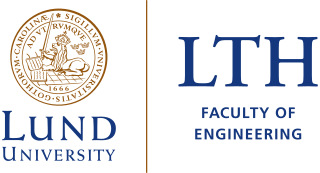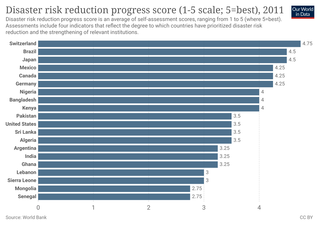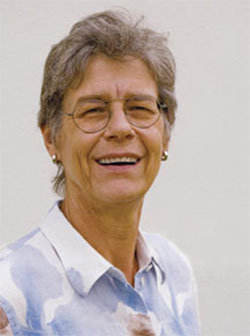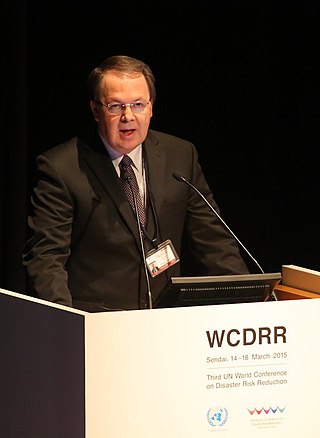Related Research Articles

Hydrology is the scientific study of the movement, distribution, and management of water on Earth and other planets, including the water cycle, water resources, and drainage basin sustainability. A practitioner of hydrology is called a hydrologist. Hydrologists are scientists studying earth or environmental science, civil or environmental engineering, and physical geography. Using various analytical methods and scientific techniques, they collect and analyze data to help solve water related problems such as environmental preservation, natural disasters, and water management.

Risk management is the identification, evaluation, and prioritization of risks, followed by the minimization, monitoring, and control of the impact or probability of those risks occurring. Risks can come from various sources including uncertainty in international markets, political instability, dangers of project failures, legal liabilities, credit risk, accidents, natural causes and disasters, deliberate attack from an adversary, or events of uncertain or unpredictable root-cause.

A flood is an overflow of water that submerges land that is usually dry. In the sense of "flowing water", the word may also be applied to the inflow of the tide. Floods are of significant concern in agriculture, civil engineering and public health. Human changes to the environment often increase the intensity and frequency of flooding. Examples for human changes are land use changes such as deforestation and removal of wetlands, changes in waterway course or flood controls such as with levees. Global environmental issues also influence causes of floods, namely climate change which causes an intensification of the water cycle and sea level rise. For example, climate change makes extreme weather events more frequent and stronger. This leads to more intense floods and increased flood risk.
Environmental engineering is a professional engineering discipline related to environmental science. It encompasses broad scientific topics like chemistry, biology, ecology, geology, hydraulics, hydrology, microbiology, and mathematics to create solutions that will protect and also improve the health of living organisms and improve the quality of the environment. Environmental engineering is a sub-discipline of civil engineering and chemical engineering. While on the part of civil engineering, the Environmental Engineering is focused mainly on Sanitary Engineering.

A natural disaster is the very harmful impact on a society or community after a natural hazard event. Some examples of natural hazard events include avalanches, droughts, earthquakes, floods, heat waves, landslides, tropical cyclones, volcanic activity and wildfires. Additional natural hazards include blizzards, dust storms, firestorms, hails, ice storms, sinkholes, thunderstorms, tornadoes and tsunamis. A natural disaster can cause loss of life or damage property. It typically causes economic damage. How bad the damage is depends on how well people are prepared for disasters and how strong the buildings, roads, and other structures are. Scholars have been saying that the term natural disaster is unsuitable and should be abandoned. Instead, the simpler term disaster could be used. At the same time the type of hazard would be specified. A disaster happens when a natural or human-made hazard impacts a vulnerable community. It results from the combination of the hazard and the exposure of a vulnerable society.

The Faculty of Engineering is one of the eight faculties at Lund University in Lund, Sweden, commonly called LTH. LTH has (2022) about 1,500 employees and nearly 10,000 students, of which about 650 graduate annually. LTH currently offers 16 engineering programmes, 5 higher engineering programmes and 19 international master's programmes. LTH trains civil engineers, fire engineers, architects, industrial designers and doctors of technology. LTH's higher education engineering programmes take place at Campus Helsingborg. LTH also offers a unique education in risk management and professional training in food technology. Since 2010, LTH has also been responsible for the bachelor's programme for airline pilots. The civil engineering programmes were changed in autumn 2007 as a step in the Bologna process and are now 5 years long, equivalent to 300 credits. First-cycle courses are as a rule offered in Swedish, while higher-level courses are often taught in English with English literature.

Geomatics is defined in the ISO/TC 211 series of standards as the "discipline concerned with the collection, distribution, storage, analysis, processing, presentation of geographic data or geographic information". Under another definition, it consists of products, services and tools involved in the collection, integration and management of geographic (geospatial) data. Surveying engineering was the widely used name for geomatic(s) engineering in the past. Geomatics was placed by the UNESCO Encyclopedia of Life Support Systems under the branch of technical geography.

Emergency management is a science and a system charged with creating the framework within which communities reduce vulnerability to hazards and cope with disasters. Emergency management, despite its name, does not actually focus on the management of emergencies; emergencies can be understood as minor events with limited impacts and are managed through the day-to-day functions of a community. Instead, emergency management focuses on the management of disasters, which are events that produce more impacts than a community can handle on its own. The management of disasters tends to require some combination of activity from individuals and households, organizations, local, and/or higher levels of government. Although many different terminologies exist globally, the activities of emergency management can be generally categorized into preparedness, response, mitigation, and recovery, although other terms such as disaster risk reduction and prevention are also common. The outcome of emergency management is to prevent disasters and where this is not possible, to reduce their harmful impacts.

Computational Engineering is an emerging discipline that deals with the development and application of computational models for engineering, known as Computational Engineering Models or CEM. Computational engineering uses computers to solve engineering design problems important to a variety of industries. At this time, various different approaches are summarized under the term Computational Engineering, including using computational geometry and virtual design for engineering tasks, often coupled with a simulation-driven approach In Computational Engineering, algorithms solve mathematical and logical models that describe engineering challenges, sometimes coupled with some aspect of AI, specifically Reinforcement Learning.
In its broadest sense, social vulnerability is one dimension of vulnerability to multiple stressors and shocks, including abuse, social exclusion and natural hazards. Social vulnerability refers to the inability of people, organizations, and societies to withstand adverse impacts from multiple stressors to which they are exposed. These impacts are due in part to characteristics inherent in social interactions, institutions, and systems of cultural values.

Disaster risk reduction aims to make disasters less likely to happen. The approach, also called DRR or disaster risk management, also aims to make disasters less damaging when they do occur. DRR aims to make communities stronger and better prepared to handle disasters. In technical terms, it aims to make them more resilient or less vulnerable. When DRR is successful, it makes communities less the vulnerable because it mitigates the effects of disasters. This means DRR can make risky events fewer and less severe. Climate change can increase climate hazards. So development efforts often consider DRR and climate change adaptation together.

Coastal engineering is a branch of civil engineering concerned with the specific demands posed by constructing at or near the coast, as well as the development of the coast itself.
The Vulnerability and Risk Committee, or VRC, is one of the four technical committees within the Council on Disaster Reduction of the American Society of Civil Engineers.
Enrico L. (Henry) Quarantelli was an American sociologist, and proponent of the sociology of disaster.

The contributions of women in climate change have received increasing attention in the early 21st century. Feedback from women and the issues faced by women have been described as "imperative" by the United Nations and "critical" by the Population Reference Bureau. A report by the World Health Organization concluded that incorporating gender-based analysis would "provide more effective climate change mitigation and adaptation."

The Honourable Rosa Galvez is a Canadian Senator representing Québec (Bedford) and an expert in pollution and its effects on human health. She was appointed to the Senate on December 6, 2016.
Irasema Alcántara-Ayala is a professor of Natural hazards and Risk at the National Autonomous University of Mexico. She combines natural science with social sciences, and in particular studies the occurrences of landslides, natural hazards and vulnerability. She was awarded the 2016 European Geosciences Union Sergey Soloviev Medal, and is an International Science Council Fellow.

Margaret A. Davidson was a coastal management pioneer. She spent most of her career working within the National Oceanic and Atmospheric Administration (NOAA), taking leadership roles that drew from her expertise in climate adaptation, sustainable coastal development, and mitigating risk associated with extreme weather events. Among these roles, Davidson served as senior leader on coastal inundation and resilience for NOAA. She is remembered as a "visionary" in coastal science and management, especially for her capacity to engage communities and consider local social and economic issues while making coastal management decisions.

Urban flooding is the inundation of land or property in cities or other built environment, caused by rainfall or coastal storm surges overwhelming the capacity of drainage systems, such as storm sewers. Urban flooding can occur regardless of whether or not affected communities are located within designated floodplains or near any body of water. It is triggered for example by an overflow of rivers and lakes, flash flooding or snowmelt. During the flood, stormwater or water released from damaged water mains may accumulate on property and in public rights-of-way. It can seep through building walls and floors, or backup into buildings through sewer pipes, cellars, toilets and sinks.

Omar-Darío Cardona Arboleda is a civil engineer, academic, and author. He is a Titular Professor of integrated disaster risk management and climate change adaptation in the Institute of Environment Studies at the National University of Colombia, Co-founder, and CEO of Ingeniar: Risk Intelligence.